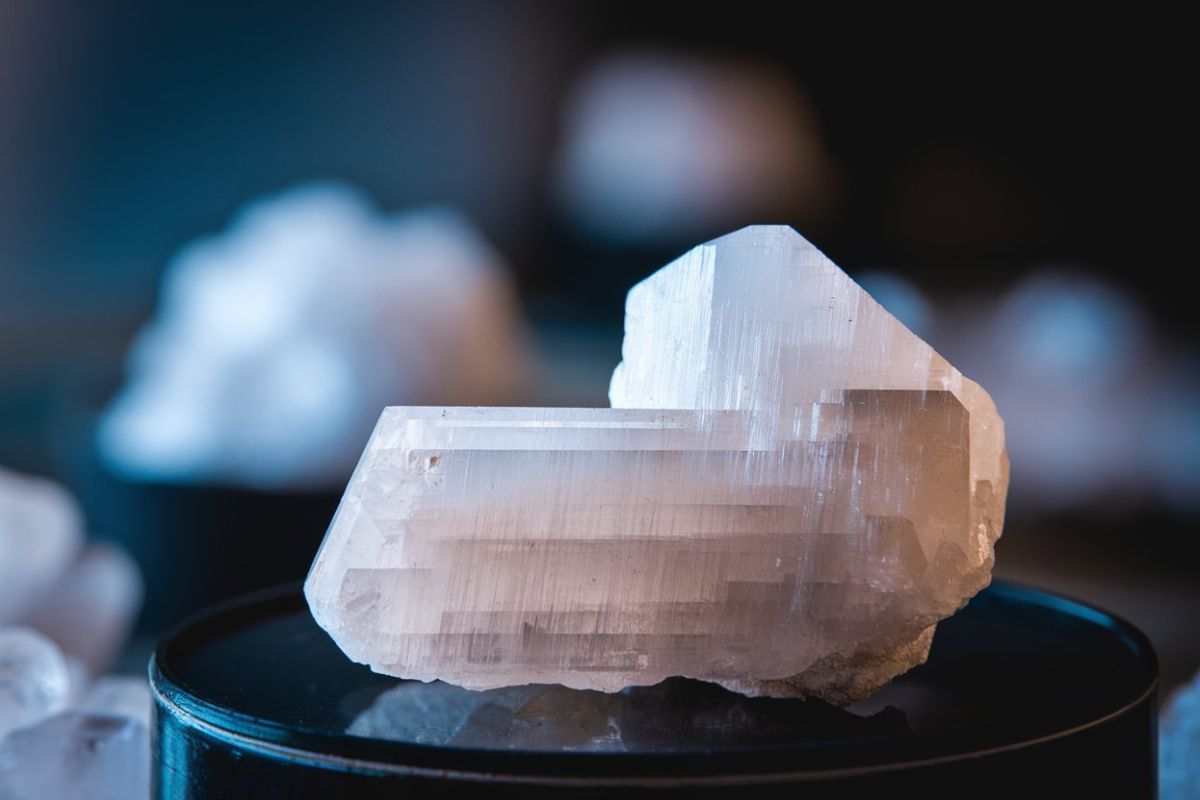
Calcium Bromide is a chemical compound with the formula CaBr2. It’s a white powder that dissolves easily in water, making it useful in various industries. Did you know that this compound plays a crucial role in oil drilling? It’s used as a dense, clear brine to control wellbore pressures. Besides, it finds applications in medicine, photography, and even food preservation. Why is calcium bromide so versatile? Its unique properties, such as high solubility and stability, make it a go-to choice for many processes. Curious about more? Let’s dive into 50 intriguing facts about this fascinating compound!
Key Takeaways:
- Calcium bromide is a versatile compound used in oil drilling, medicine, and photography. It's important to handle it safely and follow disposal guidelines to minimize environmental impact.
- While calcium bromide has medical and industrial uses, it can cause skin and eye irritation. Proper handling, storage, and disposal are crucial to ensure safety and protect the environment.
What is Calcium Bromide?
Calcium bromide is a chemical compound with the formula CaBr2. It is commonly used in various industries, including oil and gas drilling, medicine, and photography. Here are some fascinating facts about this versatile compound.
- Calcium bromide is a white crystalline solid at room temperature.
- It is highly soluble in water, making it useful in various aqueous solutions.
- The compound is hygroscopic, meaning it can absorb moisture from the air.
- It has a molar mass of 199.89 g/mol.
- Calcium bromide has a melting point of 730°C (1346°F).
- It is often used as a dense aqueous solution in drilling fluids for oil and gas wells.
- The compound is also used in the preparation of other bromide compounds.
- In medicine, calcium bromide has been used as a sedative and anticonvulsant.
- It can be synthesized by reacting calcium carbonate with hydrobromic acid.
- Calcium bromide is also used in photography as a component of certain photographic chemicals.
Uses in Oil and Gas Industry
Calcium bromide plays a crucial role in the oil and gas industry, particularly in drilling operations. Its properties make it an ideal choice for various applications.
- It is used as a completion fluid in oil and gas wells.
- The compound helps to control wellbore pressures during drilling.
- It prevents the formation of gas hydrates in drilling fluids.
- Calcium bromide is used to stabilize shale formations.
- It can be mixed with other bromides to create high-density brines.
- The compound is effective in preventing corrosion in drilling equipment.
- It helps to minimize the risk of blowouts during drilling operations.
- Calcium bromide is used in workover and completion fluids to enhance well productivity.
- It is also used in packer fluids to isolate sections of the wellbore.
- The compound is compatible with other drilling fluid additives.
Medical Applications
Calcium bromide has a history of use in medicine, particularly for its sedative and anticonvulsant properties. Here are some interesting facts about its medical applications.
- It was once commonly used to treat epilepsy.
- The compound was also used to manage anxiety and insomnia.
- Calcium bromide works by depressing the central nervous system.
- It has largely been replaced by safer and more effective medications.
- The compound is still used in some veterinary applications.
- It can be administered orally or intravenously.
- Calcium bromide was first introduced into medical practice in the 19th century.
- It was one of the first bromide compounds used in medicine.
- The compound's sedative effects are due to its ability to enhance the action of GABA, a neurotransmitter.
- Despite its decline in human medicine, calcium bromide remains an important compound in pharmaceutical research.
Environmental Impact
Like many chemicals, calcium bromide can have an impact on the environment. Understanding these effects is important for its safe use and disposal.
- It is considered to be relatively non-toxic to aquatic life.
- The compound can contribute to the formation of brominated organic compounds in the environment.
- Proper disposal methods are necessary to prevent environmental contamination.
- Calcium bromide can be neutralized with lime or soda ash before disposal.
- It is not considered to be a persistent organic pollutant.
- The compound can be broken down by natural processes in the environment.
- It is important to follow regulatory guidelines for the disposal of calcium bromide.
- The compound's hygroscopic nature means it can affect soil moisture levels.
- Calcium bromide should be stored in airtight containers to prevent moisture absorption.
- Spills should be cleaned up promptly to minimize environmental impact.
Safety and Handling
Handling calcium bromide requires certain precautions to ensure safety. Here are some key facts about its safe use and handling.
- It can cause skin and eye irritation upon contact.
- Inhalation of calcium bromide dust can irritate the respiratory tract.
- Protective clothing, gloves, and eyewear should be worn when handling the compound.
- It should be stored in a cool, dry place away from incompatible materials.
- Calcium bromide should be handled in well-ventilated areas to avoid inhalation of dust.
- In case of contact with skin or eyes, rinse immediately with plenty of water.
- If ingested, seek medical attention immediately.
- The compound should be kept away from strong acids and bases.
- Proper labeling and storage are essential to prevent accidental exposure.
- Safety data sheets should be consulted for detailed handling and emergency information.
Final Thoughts on Calcium Bromide
Calcium bromide, a versatile compound, plays a crucial role in various industries. From its use in oil drilling to its application in medicine, this compound proves its worth time and again. Its ability to act as a flame retardant and its role in photography highlight its diverse applications. Understanding these facts about calcium bromide not only broadens our knowledge but also underscores its importance in everyday life. Whether you're a student, a professional, or just curious, knowing about calcium bromide can be quite enlightening. This compound, with its myriad uses, truly stands out in the world of chemistry. So next time you come across calcium bromide, you'll know just how significant it is. Keep exploring and stay curious!
Frequently Asked Questions
Was this page helpful?
Our commitment to delivering trustworthy and engaging content is at the heart of what we do. Each fact on our site is contributed by real users like you, bringing a wealth of diverse insights and information. To ensure the highest standards of accuracy and reliability, our dedicated editors meticulously review each submission. This process guarantees that the facts we share are not only fascinating but also credible. Trust in our commitment to quality and authenticity as you explore and learn with us.


